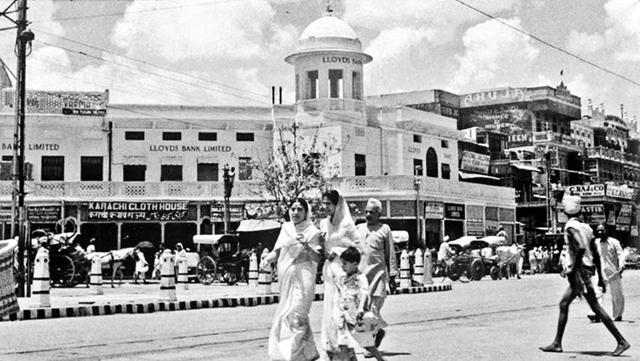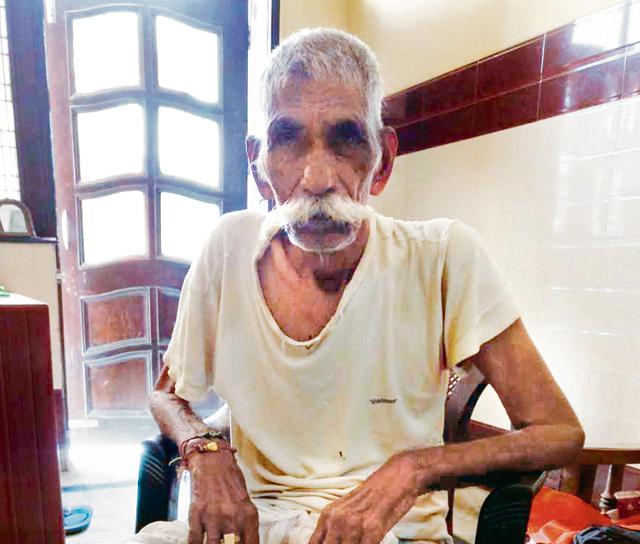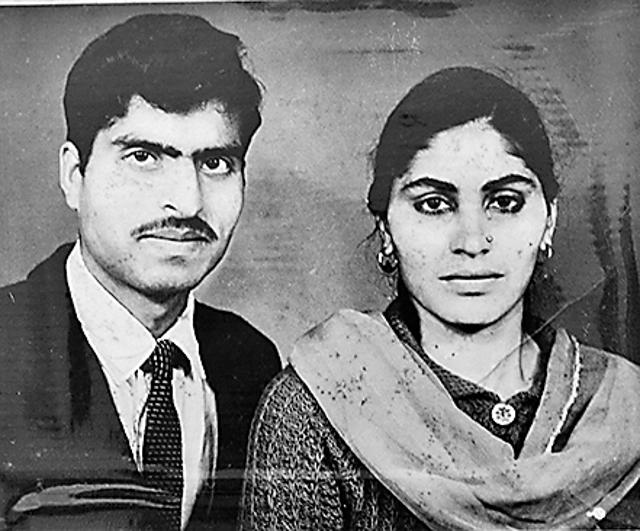Born on August 15, 1947: The search for Delhi’s Midnight’s Children
Salman Rushdie’s Midnight’s Children follows the life of Saleem Sinai, who was born at the exact moment when India gained independence. HT goes on its own quest to track people born on August 15, 1947
The house stood at the dead-end of a narrow, serpentine alley in Khair village. We knocked on the wooden gate.

It was the third day of our search for Delhi’s Midnight’s Children – born on the August 15, 1947. It had brought us to a nondescript village on the south-western periphery, around 30 kilometres from the city centre.
A young woman peeped through the gap between the doors. “I am looking for Shish Ramji? Is he your relative?” we asked.
“Why are you enquiring about him?” she replied, with a question.
“We are looking for a girl child who was born on August 15, 1947 in Khair village. Her father’s name was Shish Ram as per government records.”
“Shish Ram was my husband’s grandfather but he died long ago,” she said. “My father-in-law would be able to tell you something. He lives outside the village next to the pond near the bus stand. His name is Azad Singh. He retired from DDA. Ask anyone there, they will tell you the exact location.”
But the meeting with Azad Singh did not yield much.
“Yes, Laxmi (name changed) was my elder sister who was born on August 15 in 1947 but she died a few years later. Then I was born in 1950,” he told us.
Before meeting Singh, we had visited 25 addresses, taken down on a notebook from the municipal records, but there had been no breakthrough.
The only exception was Gurgaon-based archaeologist and author Himanshu Prabha Ray. We located Ray through the internet. She was born in an Army Hospital in Delhi Cantonment on the day India attained freedom.
Birth registration in Delhi
Before a proper mechanism to register birth and death could be evolved, it was the duty of the chowkidar (watchman) to inform the police station concerned or the tehsil about these developments in their respective areas or a midwife used to record them. Hospitals and maternity centres would register births and deaths handled by them. This system continued for decades even after the independence.
“With no organized public transport, it was not possible for chowkidars to go to police station or tehsil office to record birth. Owning a bicycle was a big deal. Therefore, the chowkidars reported birth/death once in a week or 10 days by which time some of the dates slipped his memory. So, it was completely dependent on the chowkidars’ memory,” said MS Shehrawat, 69, Advisor (Public Relations) of New Delhi Municipal Council (NDMC). The oldest birth listed in council’s record is from 1917.
Tracking down 70-year-old addresses
According to government data, 132 births (including 62 girls) were registered in Delhi on August 15, 1947. The population of Delhi was around seven lakh at that time. Apart from the New Delhi Municipal Council, set up in 1927, to manage civic affairs of the new capital ‘New Delhi’, there were seven municipal sub-committees looking after smaller regions such as Delhi Fort area, Civil Lines, Shahdara, Mehrauli, Narela, West Delhi, and Najafgarh.

As per the documents, at least 46 children were born in the Walled City on Independence Day.
We thought tracking down these 46 would be easier because in Old Delhi had stronger community ties unlike the urban population in gated colonies in other parts of the city.
However, the records mentioned only the father’s name and the place of birth – hospital or locality.
A city transformed
Even for someone born and brought up in the Old City, the addresses are hard to track. In the past seven decades, not just the demographics, the topography has changed as well. For instance, Pahari Bhojla near Turkman Gate used to have ‘13XX’ series for house numbers around 1947 as per the municipal records, but these now begin with ‘21XX’.
Similarly, serial numbers in most localities in Shahjahanabad such as Kucha Sohan Lal (Sita Ram Bazaar), Suiwalan, Gali Gadhiya (Kalan Mahal), Shahganj (Ajmeri Gate-GB Road), Kucha Dakhni Rai (Darya Ganj), and Kucha Pandit (Lal Quan) have also been revised.
“Before the formation of Municipal Corporation of Delhi (MCD) in 1958, there were 10 different notified committees functioning for different areas in the city. They have their own arrangement for allocating house numbers. When the MCD came into being, house numbers were changed. This was primarily for property tax, which required standardization of house numbers,” said MC Sharma, former Delhi Mayor.
Haji Mian Faiyazuddin, 79, who runs a guest house in Jama Masjid area, said his residence number in Kucha Meer Ashiq was also changed twice in 1950s.
Another major hurdle was that several families have shifted outside the Walled City. Even their neighbours did not know their whereabouts. Their properties have changed hands twice or thrice like the Saxenas’ of Kucha Sohan Lal in Bazaar Sita Ram, famous for beautifully carved facades of palatial mansions and family of kulfi makers.
The Saxena family, which used to reside in a part of the haveli, had a baby boy on August 15.
“The family sold the house to its previous owner long ago, I don’t remember when. They had two-three children whose name I have also forgotten. No one from the family has visited this place for years,” said RN Saxena, 87, a resident of Kucha Sohan Lal.
In the last 70 years, new constructions --transformation of single storey structures and mansions into mutli-storeyed apartments – has taken its toll on landscape and livability index of Shahajananad.
Extinction of ‘Jalal Manzil’ (in Gali Wakil Abdul Aziz, Kucha Pandit) is one such example. The municipal record has an entry of a birth on Independence Day at this address.
“There were hardly 10 houses in this street. At present, there are more than 100. I have not heard of Jalal Manzil ever though I am born and brought up here,” said Mohd Farid, 45, who runs a salon in Kucha Pandit.
In spite of this, we tracked down Saifuddin Azad at Basti Harphool Singh in Sadar Bazar. His son, Moinuddin, said that he had died around 18 years ago.
When our efforts in the Walled City failing to bear fruits, we tried out luck in the villages of Delhi in south-west and north-west districts.
Makeover of villages
Soon, we realized our folly.
Mubasi Ram, 90, a resident of Mukundpur, said the villages had started changing rapidly by the end of 1990s.
Flashy multi-storeyed houses have come up on agricultural land in Bhalaswa, Pitampura, Mukundpur, Rithala, and adjoining areas. Several old timers, who could not afford a house in the city like Ram, moved out and built their houses on the outskirts. The villages have now become home to migrants from eastern Uttar Pradesh and Bihar.
“The landlords built plush bungalows but people like me built houses outside the village limit,” Ram said.

Our next stop was Najafgarh sub-division in south-west district.
The cluster of villages in Najafgarh – Khair, Mitraon, Dhansa, Jaffarpur Kalan, Ghalibpur, Dhichaon Kalan, and others – retain families who have been living here for generations.
As per the government record, one Bihari Lal family had a boy on Independence Day in Mitraon, 70 years ago. A village elder directed us to retired squadron leader Shree Bhagwan, whose father’s name was Bihari Lal.
According to the villagers, there were two men in Mitraon, who would go by the same name around 1947 and Bhagwan’s father had a child around that time. His father, we were told, had fought in Second World War for the British.

Bhagwan was bit surprised and curious when told about our quest. “I don’t know about my date of birth in government record. I was admitted in the village school by my uncle in 1954, where the birth date was registered as June 6, 1947. At that time, no one would bother to check the municipal records,” said Bhagwan, who is the eldest among five siblings.

Later, we met Lilu Ram, a tailor in Bijwasan village, whose date of birth is also August 15, 1947 in the municipal record. He, too, expressed ignorance. “My birth date in school had been registered as January 26, 1947. The record, however, correctly identifies my father as Kishori,” Ram said.
Record mismatch
A senior municipal corporation officer, who is privy to the birth and death registration, said this ‘mismatch’ might be attributed to two factors -- system for birth registration prevailing during that period and the unwillingness of parents to register the birth of their children.
When the registration of births or deaths was made mandatory in 1969, the process was streamlined as per provisions of registration of Births and Deaths Act.
“Earlier, parents and relatives would not take it seriously and birth date was casually mentioned while admitting children in schools. But the fact is that births and deaths are being registered by all municipalities in Delhi since 1850s. We have records dating back to 1869,” he said. “Do you want to see them?”
Maybe some other time.




